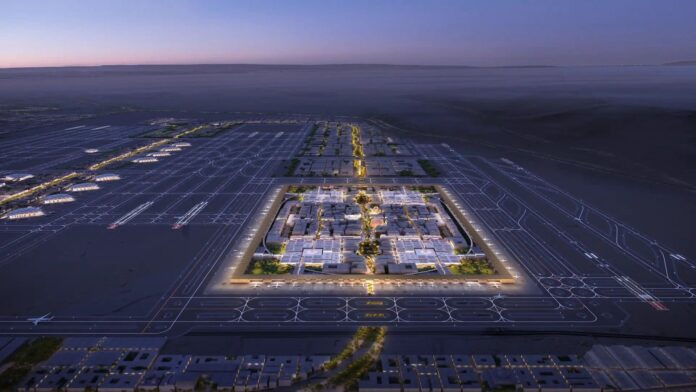Construction is underway on the King Salman International Airport in Riyadh, Saudi Arabia, with completion expected by 2030. Designed by Foster + Partners, the airport will be one of the world’s largest, spanning approximately 57 square kilometres. The development includes six runways and seven terminals and is projected to handle up to 100 million passengers annually. This ambitious project forms a key part of Saudi Arabia’s Vision 2030 initiative, which aims to position the country as a global logistics and transport hub.
Steel forms a critical component of the airport’s infrastructure, providing strength and durability for the expansive terminals, runways and supporting structures. The main terminal alone will rely on tens of thousands of metric tonnes of structural steel, used for framing, roofing, mezzanines and support columns. Steel is also integral to the construction of bridges, concourses and service areas, ensuring resilience against heavy loads and harsh climatic conditions. Its use allows for longer spans in terminal design, creating open, airy spaces for passengers while maintaining structural stability.
The design of King Salman International Airport incorporates sustainability alongside functionality. Steel is being sourced with considerations for efficiency and long-term durability, reflecting the project’s commitment to environmentally responsible construction. The airport also features the Wadi Loop, a sustainable transport connection linking terminals with surrounding infrastructure, where steel structures support pedestrian pathways and transit systems. Large-scale use of steel enables flexibility in design, helping to integrate natural lighting, energy-efficient systems and modular expansions in the future.
For infrastructure professionals, King Salman International Airport exemplifies future-forward design thinking, combining cutting-edge engineering with sustainable material choices. The extensive use of steel highlights its indispensable role in modern airport construction, supporting both structural performance and passenger experience. As one of the largest infrastructure projects in the region, it sets a benchmark for integrating steel-intensive design with environmental and operational considerations, demonstrating how material selection shapes the future of global infrastructure.




